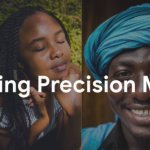TechInAfrica – As a country with a 47 million population, Uganda has seen significant growth in its internet uses.
Comparison with previous data (January 2020), shows how the increase of Ugandan internet users is in sync with its growing use of social media and mobile connection in general.
Here are some of the highlighted trends from Uganda’s digital reports in 2021:
Trends on Internet Users
This year finds 26.2% or 12.16 million active users surfing the internet, which has been a 14% increase from last year, with new 1.5 million users joining the trend.
Internet connectivity for sure affects the experience of how Ugandan internet users enjoying their time on the net.
Interestingly, the high speed of fixed internet connection (13.65 mbps) and lower change in yearly average speed (-10,3%) compared to a mobile internet connection (12.52 mbps) and its higher change in yearly average speed (-21.1%) still result in an overall lower population of internet users (12.16 million), and an overall higher population of mobile internet users (28.01 million).
Most Used Web Browser
Chrome appears to be Ugandan users’ favorite, with 60.7% users accessing the Google-owned browser across different devices, followed by Opera (23.8%), Firefox (5%), Safari (4.1%), Microsoft Edge (2.1%), Samsung Internet (1.8%), Internet Explorer (0.2%), and other unlisted browsers (2.5%).
Trends in Social Media
The 7.3% or 3.40 million Ugandan users are using social media, which sees an increase of 900k new users (36%) from last year.
Mobile phone is the most common device for users to access their choice of social platform, as seen in Facebook, which is accessed by 97.9% of users on their phone. The laptop/desktop secured second with just 2.1% accessing users, and users using both mobile phone and laptop/desktop are 7% of the population.
What about the significance of social media in delivering adverts to users?
For Facebook, the potential users to receive adverts increase to 200k this year (6.7% or 3.20 million), with male users dominating the scene (59.4%) and female users (40.6%) followed.
Facebook Messenger
The Facebook cross-messaging app has potential users of 840k, with 59.5% male users and 40.5% female users.
Adverts in LinkedIn can reach a potential of 760k users, and reported the second-highest potential in male gender after Twiter and the lowest potential in female gender compared to other social media, which is 63.4%, male users and 36.6 female users. LinkedIn has seen an increase of 20k of potential users (2.7%) from last year.
Instagram has fewer adverts potential than Facebook, with just 530k potential users (55.8 %; 44.2% male and female respectively), and an increase of 20k from last year (3.9%).
Twitter with the lowest potential users (250.4k) has its adverts to reach male users the most compared to other social media (76.7%), and reaching female users the most less (23.3%). However, it boasts new 24k potential users from last year (10.6%) the highest reported compared to other social media adverts potential.
Trends in E-Commerce
When we talk about e-commerce, financial inclusion would be one of the contributing factors that reflect the economic culture in the country.
59.2% of Ugandans are registered in financial institutions, and 50.6% have at least one mobile money account. Credit card users in Uganda are relatively low (2.3%), as well as online purchases/bills (9.5%). The male population owns more credit cards (2.8%) than the female (1.8%), and the male gender makes more online transactions (13.4%) compared to the female (5.8%).
Bottomline
The trends highlighted above can be factors that may determine the significance of the internet, social media, and e-commerce in Ugandans daily lifestyles and economics. Even though the female population (50.7%) are higher than male (49.3%), the key trends revealed how the male use more financial service, and seen more adverts.
As the number of users of the internet and mobile phones increase, the numbers and percentage provided this year may see an increase as well next year.
*All data are curated by We Are Social and HootSuite and taken from various sources.
You can see the original report here.
 We just launched our WhatsApp channel. Want to get the latest news from the Tech in Africa?
We just launched our WhatsApp channel. Want to get the latest news from the Tech in Africa?


